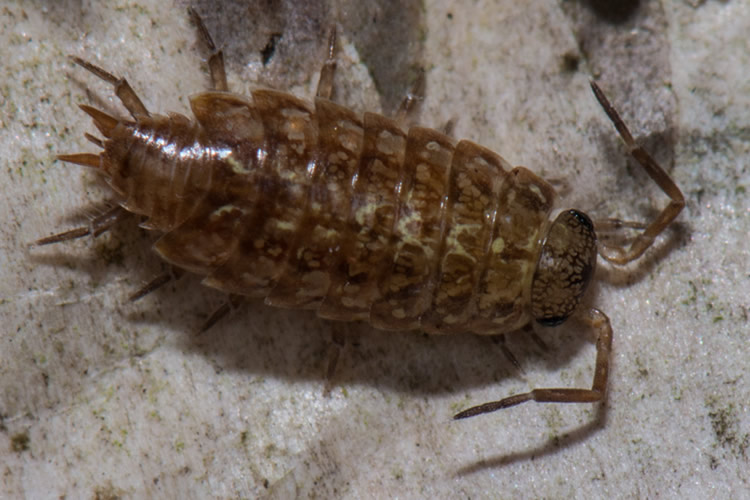Philoscia affinis Verhoeff, 1908
Status:
Native
ID Difficulty
Identification
Philoscia affinis is an over-looked native woodlouse (with specimens simply dismissed as the ubquitous P. muscorum) which could prove to be frequent and widespread if specimens are given a second glance.
Philoscia affinis is superficially very similar to P. muscorum in general appearance. The pigmentation of the head and the pigment pattern of the epimera (body edge) is a good indicator for field identification, but reliable identification requires microscopic examination of 7th pereiopod of a male specimen.
A brief description, with figures, is given by Gregory (2020).
Distribution
In Britain and Ireland this native woodlouse has been over-looked (with specimens simply dismissed as 'P. muscorum') and could prove to be frequent and widespread, at least in western areas, if specimens are given a second glance.
The presence of Philoscia affinis in the UK was first confirmed in south-east England in summer 2017 (Segers, Boeraeve & De Smedt, 2018). Subsequently, specimens previously mis-identified as P. muscorum that were collected in 2004 in South Wales and in 2006 from Oban, western Scotland, were re-identified as Philoscia affinis. Recent field work has discovered many additional sites, mainly in western Britain, including North Wales (Hughes, 2019), Lancashire, western Scotland (Gregory, 2020) and Northern Ireland (Anderson, 2019). In 2023 it was recorded from the well-worked Isles of Scilly where previous surveys had only noted P. muscorum. An updated distribution map is given in Gregory (2024) pg 24.
Habitat
Philoscia affinis has a preference for rural sites, such as open woodland and rank coastal grassland (in contrast P. muscorum generally favours open grassland sites). It does not favour synathropic sites such as churchyards and gardens (in which P. muscorum thrives). However, there are a few recent records (BMIG Newsletter 47, 2023, pg 8 & 11; Gregory (2024)) from garden centres and a city centre raised ornamental street planter suggesting that it may spread further afield via the horticultural trade.
It can be found under stones and dead wood, or among accumulations of leaf-litter.
This summary is based on Gregory, 2020, updated in Gregory (2024).
References
Segers, S., Boeraeve, P. & De Smedt, P. (2018) Philoscia affinis Verhoeff, 1908 new to the UK (Isopoda: Philosciidae). Bulletin of the British Myriapod & Isopod Group 30: 21-25.
Links
World List of Marine, Freshwater and Terrestrial Isopod Crustaceans: https://www.marinespecies.org/isopoda/aphia.php?p=taxdetails&id=258225













